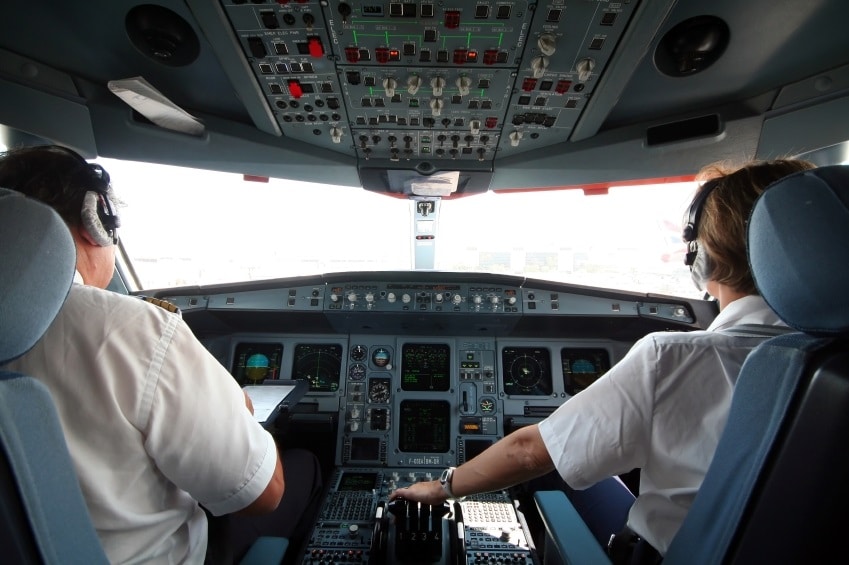Safer Air Travel Comes with Repercussions
Technological advancements have built a safety net around air travel that is mostly welcome and relieving. In a recent study by Allianz Global Corporation and Specialty Insurer and Embry-Riddle Aeronautical University, the fatality rate for commercial flights dropped during the last decade to two people per 100 million passengers. A little over 50 years ago that number was 133 people per 100 million. Now, that is progress; and with this progress come repercussions that cannot be ignored.
Computer Reliance
Much of what has driven down the air travel fatality rate is the increasingly sophisticated technology that helps to design state-of-the-art aircraft and unprecedented navigation system capabilities. Improved performance monitoring of every part of the plane is state-of-the-art and radios and electronics are being produced with increased precision.
As the skies become safer and safer, the question must be asked, “Is the automation of each of a plane’s functions producing a growing passivity among pilots?” Bottom line: there’s no question that training must be stepped up in order to raise pilot confidence about manual flying. Technology’s advancements have been the subject of debate for years, especially since the crash of Air France Flight 447, where the pilots lost control of an Airbus A330 jet on a flight from Brazil to France. The truth is that prior to the last decade’s safety gains, pilots were trained regularly on all kinds of “what ifs.” A German pilots group backs this up in their call for increased mandatory training to prepare for the “plan B” that, although rare, does occasionally occur.
Cyber-Terrorism Threats
The long-term decline in fatal accidents (and insurance premiums) faces a new challenge with cyber terrorism, a practice that, “…may replace the hijacker and bomber and become the weapon of choice on attacks against the aviation community,” German insurer Allianz said in a recent review of aviation safety. The latest efforts on the part of the International Air Transport Association (IATA), to build awareness of such threats, include a risk assessment toolkit that is expected to help airlines mitigate potential hazards in their IT systems.
“Aviation relies on computer systems extensively in ground and flight operations and air traffic management, and we know we are a target,” IATA Director General Tony Tyler said at a conference last October. With the toolkit, the IATA seeks to jumpstart the industry’s attentiveness about certain threat scenarios in an effort to help airlines analyze where vulnerabilities would most likely occur.
Commercial Drones
Commercial drones pose their own set of threats to airline safety as their use becomes more prevalent. Surveillance, crop dusting, newsgathering, and sporting events are all potential hotspots of drone activity. Recent reports reveal that the Federal Aviation Administration (FAA) is working to enforce regulations that will prevent drones from sharing airspace with commercial airliners, but education about drone safety and regulation enforcement needs a complete overhaul. Further problems could unfold if regulators don’t keep pace with technology. “The potential risks are obvious, namely collision, or third-party damage or injury and resulting liability,” Allianz said. The FAA reports that pilots have seen up to 25 cases per month of drones flying above the regulated 400 feet limit. In fact, since drones have entered the commercial market, some have been seen flying as high as 2000 feet.
Rising Costs
Finally, with safe skies come hefty costs. Whether replacing or repairing an aircraft, the sophisticated electronic components in an aircraft consist of pricey composite material, very different from the standard metal. The total worldwide value of today’s commercial fleet could soon top $1 trillion, after the exposure to insurance companies grew from $576 billion in 2000 to $896 billion today. Although today’s losses are rare, when they do occur the impact on finances is extraordinary.
For more insight about the risk of cyber-attacks and drones to commercial airlines, or the rising cost of aircraft repair, contact the aviation lawyers of Slack Davis Sanger. For 20 years, Slack Davis Sanger has won complex aviation cases that called for practiced professionals. Along with Slack Davis Sanger’ skilled legal team, the practice employs a registered nurse, licensed engineers, pilots, and other proficient aviators.

